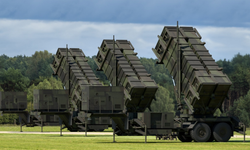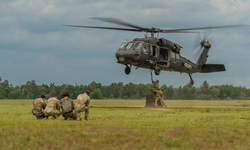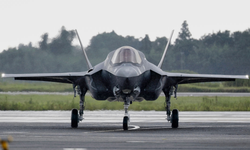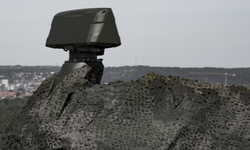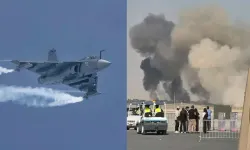The U.S. Air Force is seeking industry proposals to build exact replicas of the Shahed-136, the Iranian-designed drone heavily used by Russia. The request is part of an effort to test and develop new counter-drone systems.
According to a solicitation posted last week, the service plans to purchase 16 replicas with the option for 20 more. The requirement specifies that the aircraft must be a 1:1 copy in “form, fit, and function” of the Shahed-136, including a payload capacity of 70 to 100 pounds and a flight range of at least 50 miles. While far less than the Shahed’s operational range of up to 2,500 kilometers, the reduced capability is considered adequate for testing purposes.
The Air Force outlined additional requirements, including that the drones weigh between 55 and 1,320 pounds, fly below 18,000 feet, and remain under 250 knots. The design must feature open system architecture to integrate various payloads, be launched from a pneumatic system, and be able to take off and land autonomously. No more than three personnel should be required to set up and operate the system.
The solicitation notes that the replicas will be delivered to the Air Force’s Armament Directorate at Eglin Air Force Base in Florida, which is responsible for weapons development. However, the government stated it will not provide a technical data package, leaving companies to design their own versions independently.
Several U.S. firms have already demonstrated drones intended to emulate the Shahed. At a Pentagon event last month, Arizona-based SpektreWorks showcased its Low-Cost Uncrewed Combat Attack System (LUCAS). Alabama’s Griffon Aerospace has also introduced the MQM-172 Arrowhead, designed as both an attack and target drone.
The Shahed-136, also known as Geran-2 in Russia, has become a mainstay of Moscow’s attacks in Ukraine due to its relatively low cost—estimated between $20,000 and $50,000 per unit—compared to the high expense of Western air defense interceptors. Carrying a warhead of roughly 40 kilograms, the drones have been used to strike infrastructure and other targets. Russia has significantly increased the scale of its drone strikes, with reported weekly launches rising from around 200 to over 1,000 since late 2024.
Ukraine and its partners have been developing various responses, including specialized first-person view drones, interceptor missiles, and AI-assisted defense systems. The U.S. effort to acquire replicas underscores the growing emphasis on fielding cost-effective and adaptable countermeasures.


